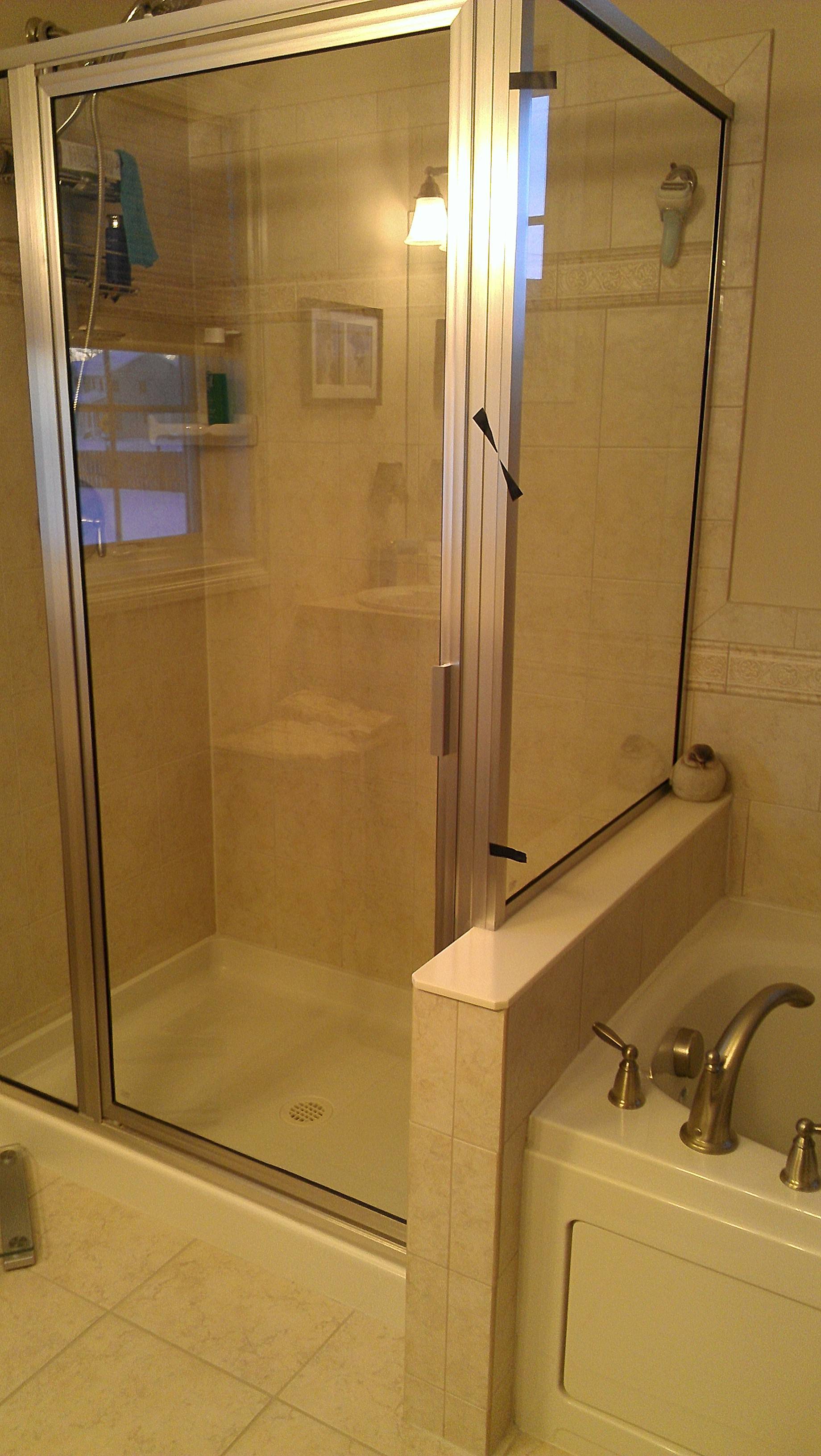well, short of dismantling the frame and welding the tubes shut (WTF????), you might try an easier approach. never seal the vertical tubes shut. if you have water building up inside the tubes, you need larger vent holes on the bottom of the wet side of the shower. its common that they get plugged up over time.
having assembled dozens of these units over the years, i must admit that the one you have is a little different on the top corner detail, but they are all pretty much the same. the wall has rails mounted to it, then decorative rails slide over those to provide the wall anchor points for the glass. then the corner rail (either stop or hinge) is held captive by the top and bottom channels, which also hold the fixed glass panels captive. the door then hinges off the corner rail typically. since the left and right panels are joined at the corner, this joint tends to flex in two directions and causes the usually inadequate factory seal to fail prematurely.
so, try this (the worst you will do is make it such that if you do have to disassemble the unit, you might have to scrape out some caulking) after you have left the unit to dry for a few days (you can use a hair dryer to speed up the process if need be):
1) clean all surfaces that you are going to seal really well with methyl hydrate or methanol. any places that have been previously siliconed over will have to be scraped clean and then cleaned with silicone sealant remover.
2) get a renovators bar (or 10) or a butter knife (or 10) and slip them in the joint to wedge the offending corner joint apart. just a little, just enough to get the sealant in. then get yourself a large bore (14 ga or larger for silicone) hypodermic needle (like the kind to refill ink cartridges with) and inject clear silicone (NOT LATEX) sealant into the gap. go slow and inject way more than seems reasonable (the metal extrusions often have convoluted profiles that are invisible from outside the joint that will allow for the silicone to not seal well). go from top to bottom and tap the frame often to get the silicone to settle and cling to the inside of the joint.
3) on the wet side of the shower, and only the wet side, run a vertical bead of silicone over the joint. i would mask the joint with tape so that you can get a nice bead with little mess.
if you do all the cleaning well and be very thorough, this will solve your leak. you may have to do it again every couple of years, but it generally works permanently.






